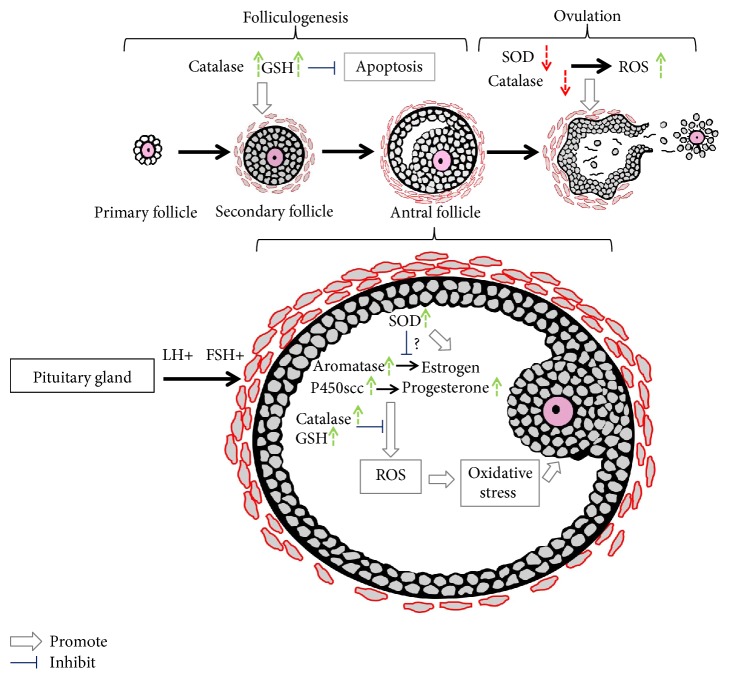Figure 2.
Schematic representation of antioxidant regulation in follicular development. The follicular development process is initiated with primordial follicles to primary follicles, followed by secondary follicles and tertiary follicles. Preovulatory follicles are formed under the stimulation of FSH, and finally, ovulation is triggered by a surge of luteinizing hormone (LH). All these consecutive and synchronized events are accompanied by ROS production and scavenging. Antioxidants are strongly modulated during this process. Catalase and GSH expression in the follicles is enhanced with follicular growth, while SOD activity is reduced in folliculogenesis. SOD was shown to have inhibitory effects on oestrogen synthesis by inhibiting FSH-induced aromatase activity in cultured granulosa cells, while SOD enzyme activity is positively correlated with oestradiol levels in the follicular fluid. A large amount of ROS can be produced during steroidogenesis, especially during the conversion of cholesterol to pregnenolone via cytochrome P450scc. Gonadotropin induces the upregulation of antioxidants such as catalase; GSH in the follicles protects oocytes from oxidative stress generated from physiological metabolic processes, such as steroidogenesis, in the ovary.

